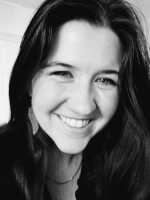Firefighters have long studied how fires behave to figure out where they’re going and how to keep people safe. But wildfires are becoming more unpredictable.
Decades of poor forest management along with development in fire-prone areas and the climate crisis are making wildfires more destructive. Some of these hot, massive blazes even create their own microclimate that’s not as affected by external weather (called a plume-driven or plume-dominated fires).
One fire scientist based in Montana, Mark Finney, compared these firestorms to the fire-bombing of Dresden in World War II, as he explained in a recent article in Wired.
“So a certain amount of information was developed during those days (about these kinds of firestorms), but then the interest died off. We didn’t really have too many of these fires in the United States for many, many decades. And so now it seems like people are more and more aware that these kinds of fires can happen,” he told the Mountain West News Bureau.
A consortium of fire researchers called Pyregence is hopeful it can predict where these fires might crop up.
"If you look at how models are developed, they’re built off of historic trends. And you look at our future conditions, they don’t match up with our historic trends," said David Saah, a professor at the University of San Francisco and one of the Pyregence researchers.
However, Saah says the group is working fast.
"We don’t have time to wait five years," he said. "So beta versions for the near-real-term stuff is already up and running. It was already used in this fire season. It’s already saved some lives and communities."
Much of the group’s forecasting focused on California this year, but Saah expects it to spread throughout the continental U.S. in the years to come.
However, Finney in Montana says that while modeling is good, there’s only so much it can achieve.
“The big problem occurs because with some kinds of fire behaviors that have, and for the foreseeable future will continue to be, beyond the reach of any kind of predictive modeling,” he said.
For example, he said those large, plume-dominated fires “involve atmospheric coupling and dynamics where very tall pyroconvective storms, such as basically thunderstorms, occur because of the heating at the surface from the fire. Those are meteorological phenomena as much as a fire phenomena. And they're very, very difficult to predict faster than real time.”
So Finney said the most important part of modeling isn’t predicting what a large fire is going to do, but how to mitigate the potential for a large fire, how to anticipate them and how to be safe around them.
“Modeling, in a predictive sense once the fire's been going, offers us very, very little bang for the buck. There's just not much that we can do at that point,” he said.
So the way forward, he said, is still largely through land management and promoting healthy fire use around the West. When a massive area hasn’t seen fire for decades, Finney said there’s little to stop a fire there from getting bigger and bigger.
“Suppression is largely ineffective on large fires when the weather is very dry and there’s very dry wind events,” he said. “So the only proactive way to deal with this is through managing these lands, understanding the role that land plays in the vegetation dynamics, and being tolerant of having fire as a partner in managing lands.”
“Fire’s really as much of an ally as it is an enemy in these cases and we’ve failed to really form an alliance with it and use it as a tool as people for thousands of years before us had done.”
This story was produced by the Mountain West News Bureau, a collaboration between Wyoming Public Media, Boise State Public Radio in Idaho, KUNR in Nevada, the O'Connor Center for the Rocky Mountain West in Montana, KUNC in Colorado, KUNM in New Mexico, with support from affiliate stations across the region. Funding for the Mountain West News Bureau is provided in part by the Corporation for Public Broadcasting.
Copyright 2020 Boise State Public Radio News








